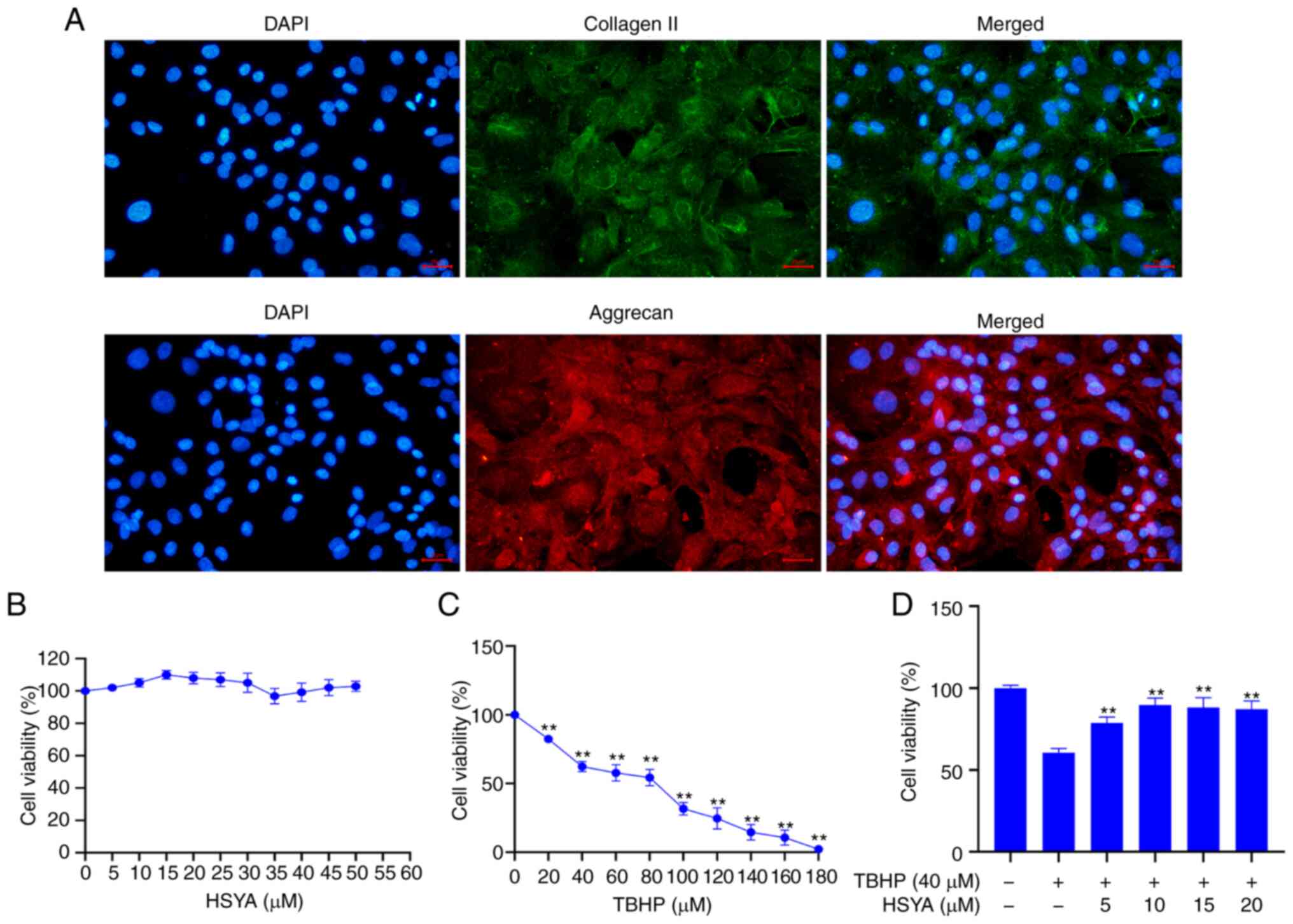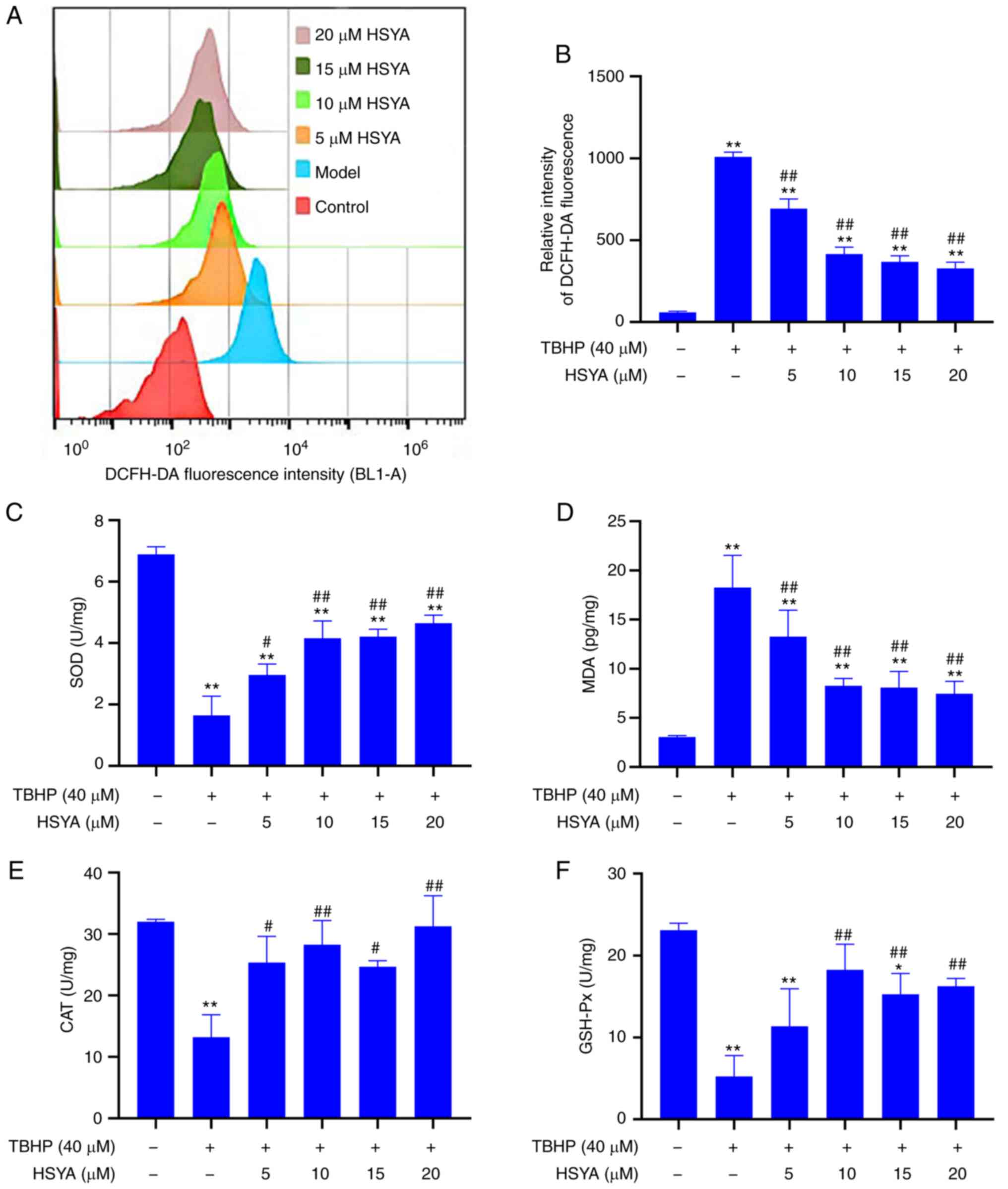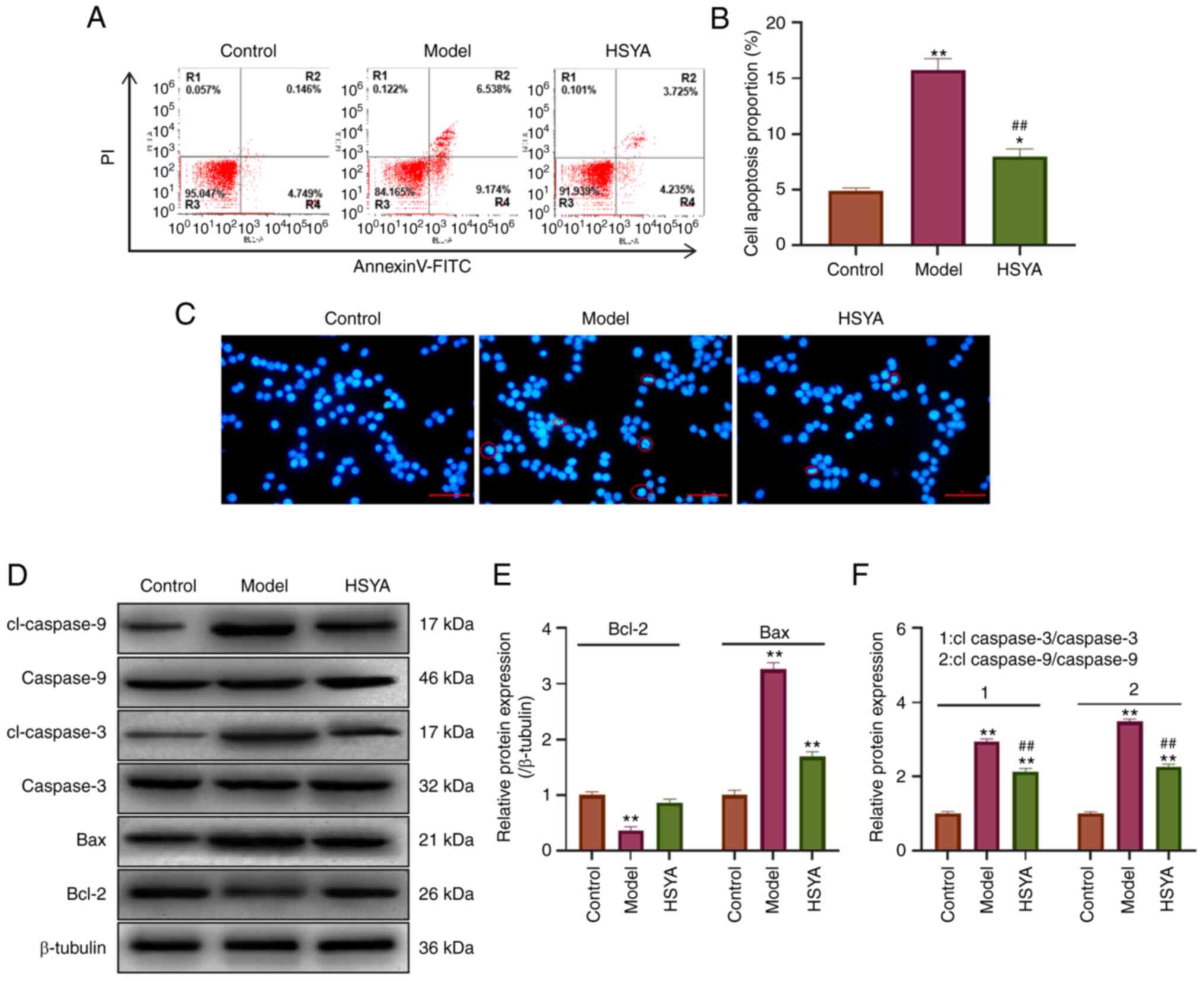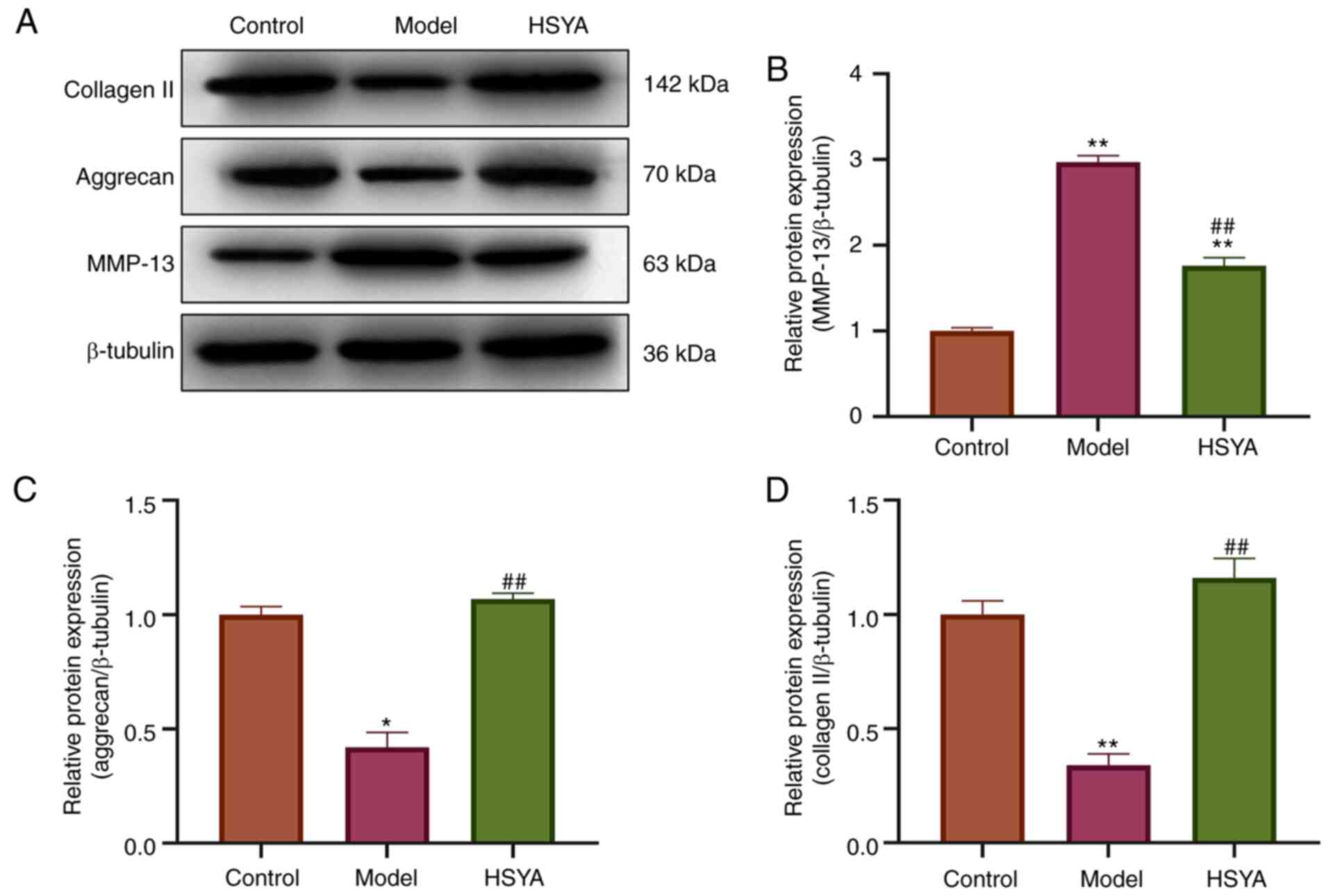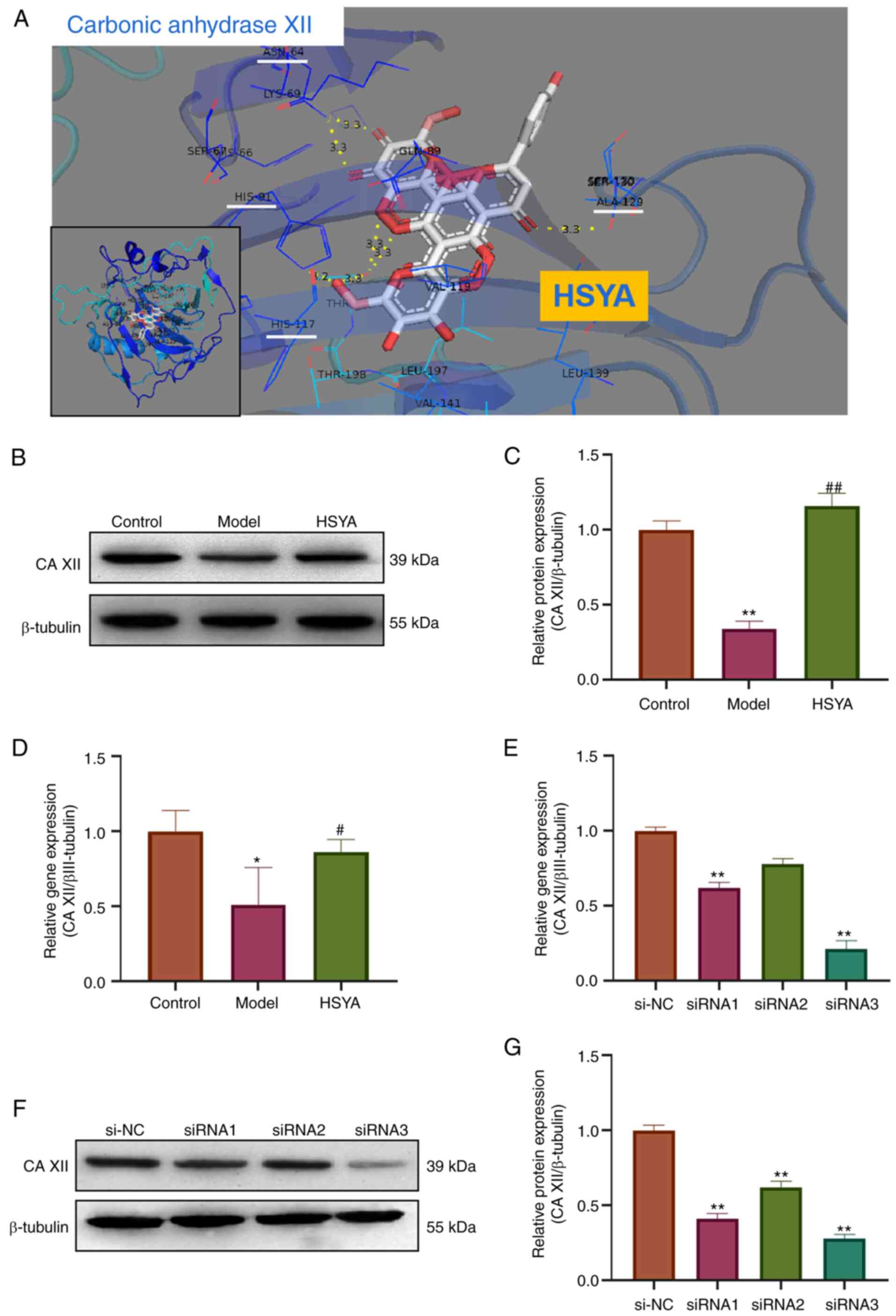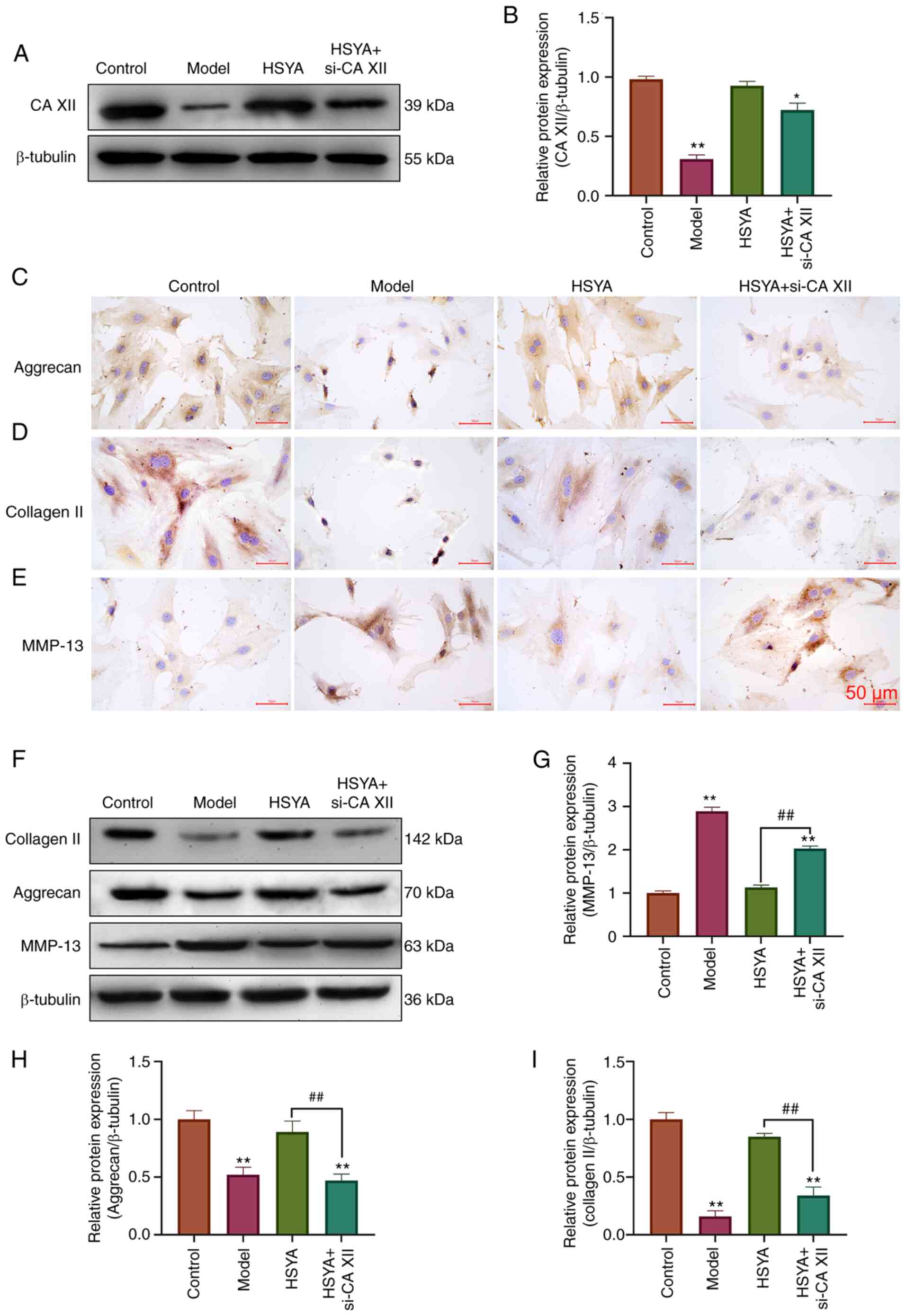|
1
|
Zhang S, Liang W, Abulizi Y, Xu T, Cao R,
Xun C, Zhang J and Sheng W: Quercetin Alleviates Intervertebral
disc degeneration by modulating p38 MAPK-Mediated autophagy. Biomed
Res Int. 2021(6631562)2021.PubMed/NCBI View Article : Google Scholar
|
|
2
|
Trefilova VV, Shnayder NA, Petrova MM,
Kaskaeva DS, Tutynina OV, Petrov KV, Popova TE, Balberova OV,
Medvedev GV and Nasyrova RF: The role of polymorphisms in
Collagen-encoding genes in intervertebral disc degeneration.
Biomolecules. 11(1279)2021.PubMed/NCBI View Article : Google Scholar
|
|
3
|
Patil P, Niedernhofer LJ, Robbins PD, Lee
J, Sowa G and Vo N: Cellular senescence in intervertebral disc
aging and degeneration. Curr Mol Biol Rep. 4:180–190.
2018.PubMed/NCBI View Article : Google Scholar
|
|
4
|
Wu X, Song Y, Liu W, Wang K, Gao Y, Li S,
Duan Z, Shao Z, Yang S and Yang C: IAPP modulates cellular
autophagy, apoptosis, and extracellular matrix metabolism in human
intervertebral disc cells. Cell Death Discov.
3(16107)2017.PubMed/NCBI View Article : Google Scholar
|
|
5
|
Chen S, Qin L, Wu X, Fu X, Lin S, Chen D,
Xiao G, Shao Z and Cao H: Moderate fluid shear stress regulates
Heme Oxygenase-1 expression to promote autophagy and ECM
homeostasis in the nucleus pulposus cells. Front Cell Dev Biol.
8(127)2020.PubMed/NCBI View Article : Google Scholar
|
|
6
|
Gonzales S, Wang C, Levene H, Cheung HS
and Huang CC: ATP promotes extracellular matrix biosynthesis of
intervertebral disc cells. Cell Tissue Res. 359:635–642.
2015.PubMed/NCBI View Article : Google Scholar
|
|
7
|
Clouet J, Fusellier M, Camus A, Le Visage
C and Guicheux J: Intervertebral disc regeneration: From cell
therapy to the development of novel bioinspired endogenous repair
strategies. Adv Drug Deliv Rev. 146:306–324. 2019.PubMed/NCBI View Article : Google Scholar
|
|
8
|
Pizzino G, Irrera N, Cucinotta M, Pallio
G, Mannino F, Arcoraci V, Squadrito F, Altavilla D and Bitto A:
Oxidative stress: Harms and benefits for human health. Oxid Med
Cell Longev. 2017(8416763)2017.PubMed/NCBI View Article : Google Scholar
|
|
9
|
Singh A, Kukreti R, Saso L and Kukreti S:
Oxidative Stress: A key modulator in neurodegenerative diseases.
Molecules. 24(1583)2019.PubMed/NCBI View Article : Google Scholar
|
|
10
|
Johnson J, Jaggers RM, Sreejit G, Dahdah
A, Murphy AJ, Hanssen NMJ and Nagareddy P: Oxidative stress in
neutrophils: Implications for diabetic cardiovascular
complications. Antioxid Redox Signal: Jun 19, 2021 (Epub ahead of
print).
|
|
11
|
Butterfield DA and Boyd-Kimball D:
Oxidative stress, Amyloid-β peptide, and altered key molecular
pathways in the pathogenesis and progression of Alzheimer's
disease. J Alzheimers Dis. 62:1345–1367. 2018.PubMed/NCBI View Article : Google Scholar
|
|
12
|
Masuda T, Shimazawa M and Hara H: Retinal
diseases associated with oxidative stress and the effects of a free
radical scavenger (Edaravone). Oxid Med Cell Longev.
2017(9208489)2017.PubMed/NCBI View Article : Google Scholar
|
|
13
|
Krupkova O, Handa J, Hlavna M, Klasen J,
Ospelt C, Ferguson SJ and Wuertz-Kozak K: The natural polyphenol
epigallocatechin gallate protects intervertebral disc cells from
oxidative stress. Oxid Med Cell Longev.
2016(7031397)2016.PubMed/NCBI View Article : Google Scholar
|
|
14
|
Xu J, Zhan T, Zheng W, Huang YK, Chen K,
Zhang XH, Ren P and Huang X: Hydroxysafflor yellow A acutely
attenuates blood-brain barrier permeability, oxidative stress,
inflammation and apoptosis in traumatic brain injury in rats1. Acta
Cir Bras. 35(e351202)2021.PubMed/NCBI View Article : Google Scholar
|
|
15
|
Lee M, Zhao H, Liu X, Liu D, Chen J, Li Z,
Chu S, Kou X, Liao S, Deng Y, et al: Protective effect of
hydroxysafflor yellow A on nephropathy by attenuating oxidative
stress and inhibiting apoptosis in induced type 2 diabetes in rat.
Oxid Med Cell Longev. 2020(7805393)2020.PubMed/NCBI View Article : Google Scholar
|
|
16
|
Hu ZC, Xie ZJ, Tang Q, Li XB, Fu X, Feng
ZH, Xuan JW, Ni WF and Wu AM: Hydroxysafflor yellow A (HSYA)
targets the NF-κB and MAPK pathways and ameliorates the development
of osteoarthritis. Food Funct. 9:4443–4456. 2018.PubMed/NCBI View Article : Google Scholar
|
|
17
|
Zhang Z, Wang C, Lin J, Jin H, Wang K, Yan
Y, Wang J, Wu C, Nisar M, Tian N, et al: Therapeutic potential of
naringin for intervertebral disc degeneration: Involvement of
autophagy against oxidative stress-induced apoptosis in nucleus
pulposus cells. Am J Chin Med: Oct 4, 2018 (Epub ahead of
print).
|
|
18
|
Chen S, Fang XQ, Wang Q, Wang SW, Hu ZJ,
Zhou ZJ, Xu WB, Wang JY, Qin A and Fan SW: PHD/HIF-1 upregulates
CA12 to protect against degenerative disc disease: A human sample,
in vitro and ex vivo study. Lab Invest. 96:561–569. 2016.PubMed/NCBI View Article : Google Scholar
|
|
19
|
van den Akker GG, Surtel DA, Cremers A,
Rodrigues-Pinto R, Richardson SM, Hoyland JA, van Rhijn LW, Welting
TJ and Voncken JW: Novel immortal human cell lines reveal
subpopulations in the nucleus pulposus. Arthritis Res Ther.
16(R135)2014.PubMed/NCBI View
Article : Google Scholar
|
|
20
|
Power KA, Grad S, Rutges JP, Creemers LB,
van Rijen MH, O'Gaora P, Wall JG, Alini M, Pandit A and Gallagher
WM: Identification of cell surface-specific markers to target human
nucleus pulposus cells: Expression of carbonic anhydrase XII varies
with age and degeneration. Arthritis Rheum. 63:3876–3886.
2011.PubMed/NCBI View Article : Google Scholar
|
|
21
|
Bayne K: Revised guide for the care and
use of laboratory animals available. American Physiological
Society. Physiologist. 39:199. 208–211. 1996.PubMed/NCBI
|
|
22
|
Livak KJ and Schmittgen TD: Analysis of
relative gene expression data using real-time quantitative PCR and
the 2(-Delta Delta C(T)) method. Methods. 25:402–408.
2001.PubMed/NCBI View Article : Google Scholar
|
|
23
|
Hu W, Zhang W, Li F, Guo F and Chen A:
Bortezomib prevents the expression of MMP-13 and the degradation of
collagen type 2 in human chondrocytes. Biochem Biophys Res Commun.
452:526–530. 2014.PubMed/NCBI View Article : Google Scholar
|
|
24
|
Lyu FJ, Cheung KM, Zheng Z, Wang H, Sakai
D and Leung VY: IVD progenitor cells: A new horizon for
understanding disc homeostasis and repair. Nat Rev Rheumatol.
15:102–112. 2019.PubMed/NCBI View Article : Google Scholar
|
|
25
|
Swann MC, Hoes KS, Aoun SG and McDonagh
DL: Postoperative complications of spine surgery. Best Pract Res
Clin Anaesthesiol. 30:103–120. 2016.PubMed/NCBI View Article : Google Scholar
|
|
26
|
Forrester SJ, Kikuchi DS, Hernandes MS, Xu
Q and Griendling KK: Reactive oxygen species in metabolic and
inflammatory signaling. Circ Res. 122:877–902. 2018.PubMed/NCBI View Article : Google Scholar
|
|
27
|
Ge J, Wang Y, Yan Q, Wu C, Yu H, Yang H
and Zou J: FK506 Induces the TGF-β1/Smad 3 pathway independently of
calcineurin inhibition to prevent intervertebral disk degeneration.
Front Cell Dev Biol. 8(608308)2020.PubMed/NCBI View Article : Google Scholar
|
|
28
|
Theocharis AD, Skandalis SS, Gialeli C and
Karamanos NK: Extracellular matrix structure. Adv Drug Deliv Rev.
97:4–27. 2016.PubMed/NCBI View Article : Google Scholar
|
|
29
|
Guo S, Cui L, Xiao C, Wang C, Zhu B, Liu
X, Li Y, Liu X, Wang D and Li S: The Mechanisms and functions of
GDF-5 in intervertebral disc degeneration. Orthop Surg. 13:734–741.
2021.PubMed/NCBI View
Article : Google Scholar
|
|
30
|
Xu J, E XQ, Wang NX, Wang MN, Xie HX, Cao
YH, Sun LH, Tian J, Chen HJ and Yan JL: BMP7 enhances the effect of
BMSCs on extracellular matrix remodeling in a rabbit model of
intervertebral disc degeneration. FEBS J. 283:1689–1700.
2016.PubMed/NCBI View Article : Google Scholar
|
|
31
|
Gan JC, Ducheyne P, Vresilovic EJ, Swaim W
and Shapiro IM: Intervertebral disc tissue engineering I:
Characterization of the nucleus pulposus. Clin Orthop Relat Res.
411:305–314. 2003.PubMed/NCBI View Article : Google Scholar
|
|
32
|
Le Maitre CL, Freemont AJ and Hoyland JA:
Localization of degradative enzymes and their inhibitors in the
degenerate human intervertebral disc. J Pathol. 204:47–54.
2004.PubMed/NCBI View Article : Google Scholar
|
|
33
|
Wang J, Hu J, Chen X, Huang C, Lin J, Shao
Z, Gu M, Wu Y, Tian N, Gao W, et al: BRD4 inhibition regulates
MAPK, NF-κB signals, and autophagy to suppress MMP-13 expression in
diabetic intervertebral disc degeneration. FASEB J. 33:11555–11566.
2019.PubMed/NCBI View Article : Google Scholar
|
|
34
|
Chen Y, Zheng Z, Wang J, Tang C, Khor S,
Chen J, Chen X, Zhang Z, Tang Q, Wang C, et al: Berberine
suppresses apoptosis and extracellular matrix (ECM) degradation in
nucleus pulposus cells and ameliorates disc degeneration in a
rodent model. Int J Biol Sci. 14:682–692. 2018.PubMed/NCBI View Article : Google Scholar
|
|
35
|
Waheed A and Sly WS: Carbonic anhydrase
XII functions in health and disease. Gene. 623:33–40.
2017.PubMed/NCBI View Article : Google Scholar
|
|
36
|
Hynninen P, Hämäläinen JM, Pastorekova S,
Pastorek J, Waheed A, Sly WS, Tomas E, Kirkinen P and Parkkila S:
Transmembrane carbonic anhydrase isozymes IX and XII in the female
mouse reproductive organs. Reprod Biol Endocrinol.
2(73)2004.PubMed/NCBI View Article : Google Scholar
|
|
37
|
Minogue BM, Richardson SM, Zeef LA,
Freemont AJ and Hoyland JA: Characterization of the human nucleus
pulposus cell phenotype and evaluation of novel marker gene
expression to define adult stem cell differentiation. Arthritis
Rheum. 62:3695–3705. 2010.PubMed/NCBI View Article : Google Scholar
|
|
38
|
Zhao X, Shen P, Li H, Yang Y, Guo J, Chen
S, Ma Y, Sheng J, Shen S, Liu G and Fang X: Carbonic Anhydrase 12
protects endplate cartilage from degeneration regulated by
IGF-1/PI3K/CREB signaling pathway. Front Cell Dev Biol.
8(595969)2020.PubMed/NCBI View Article : Google Scholar
|















